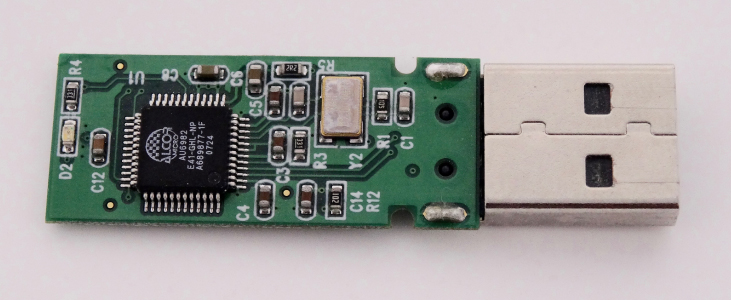| << Chapter < Page | Chapter >> Page > |
Most of us have seen dramatizations of medical personnel using a defibrillator to pass an electrical current through a patient’s heart to get it to beat normally. Often realistic in detail, the person applying the shock directs another person to “make it 400 joules this time.” The energy delivered by the defibrillator is stored in a capacitor and can be adjusted to fit the situation. SI units of joules are often employed. Less dramatic is the use of capacitors in microelectronics to supply energy when batteries are charged ( [link] ). Capacitors are also used to supply energy for flash lamps on cameras.

The energy stored in a capacitor is electrostatic potential energy and is thus related to the charge Q and voltage V between the capacitor plates. A charged capacitor stores energy in the electrical field between its plates. As the capacitor is being charged, the electrical field builds up. When a charged capacitor is disconnected from a battery, its energy remains in the field in the space between its plates.
To gain insight into how this energy may be expressed (in terms of Q and V ), consider a charged, empty, parallel-plate capacitor; that is, a capacitor without a dielectric but with a vacuum between its plates. The space between its plates has a volume Ad , and it is filled with a uniform electrostatic field E . The total energy of the capacitor is contained within this space. The energy density in this space is simply divided by the volume Ad . If we know the energy density, the energy can be found as . We will learn in Electromagnetic Waves (after completing the study of Maxwell’s equations) that the energy density in a region of free space occupied by an electrical field E depends only on the magnitude of the field and is
If we multiply the energy density by the volume between the plates, we obtain the amount of energy stored between the plates of a parallel-plate capacitor: .
In this derivation, we used the fact that the electrical field between the plates is uniform so that and Because , we can express this result in other equivalent forms:
The expression in [link] for the energy stored in a parallel-plate capacitor is generally valid for all types of capacitors. To see this, consider any uncharged capacitor (not necessarily a parallel-plate type). At some instant, we connect it across a battery, giving it a potential difference between its plates. Initially, the charge on the plates is As the capacitor is being charged, the charge gradually builds up on its plates, and after some time, it reaches the value Q . To move an infinitesimal charge dq from the negative plate to the positive plate (from a lower to a higher potential), the amount of work dW that must be done on dq is .

Notification Switch
Would you like to follow the 'University physics volume 2' conversation and receive update notifications?